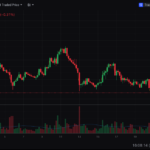Introduction
In crypto trading, liquidity is one of the most important factors that determines whether an exchange is reliable and efficient. High liquidity exchanges allow traders to execute large transactions quickly and with minimal slippage. For both retail investors and institutional players, choosing the right exchange is crucial to maximize profits and reduce risks.
🔹 What Is Liquidity in Crypto?
Liquidity refers to how easily an asset can be bought or sold without significantly impacting its price. In highly liquid markets, there are plenty of buyers and sellers, meaning trades happen faster and with tighter spreads.
Low liquidity, on the other hand, leads to:
- Higher price slippage
- Wider bid-ask spreads
- Difficulty executing large orders
💡 Why High Liquidity Matters
- Efficient Trading – Orders are filled instantly at market prices.
- Lower Slippage – Reduced risk of paying more (or receiving less) than expected.
- Better Price Discovery – Markets reflect real demand and supply more accurately.
- Institutional Access – Large players require deep liquidity to trade at scale.
📊 Top High Liquidity Crypto Exchanges
✅ Centralized Exchanges (CEXs)
- Binance – The world’s largest exchange by volume and liquidity.
- Coinbase Pro – Popular among U.S. traders with strong liquidity in BTC and ETH pairs.
- Kraken – Known for reliability and deep liquidity across crypto-fiat pairs.
✅ Decentralized Exchanges (DEXs)
- Uniswap (Ethereum) – Leading automated market maker (AMM) with strong liquidity pools.
- PancakeSwap (BNB Chain) – High-liquidity DEX with lower fees and active DeFi ecosystem.
- Curve Finance – Specialized in stablecoin trading with deep liquidity and low slippage.
⚠️ Risks to Consider
- Centralized Control (CEXs) – Custodial risks and regulatory restrictions.
- Impermanent Loss (DEXs) – Liquidity providers may face losses when prices shift.
- Regulation – Increasing scrutiny could impact exchange liquidity.
📌 Conclusion
High liquidity exchanges are essential for smooth, cost-efficient, and secure trading. Whether through centralized giants like Binance and Coinbase or decentralized leaders like Uniswap and PancakeSwap, traders should prioritize platforms with deep liquidity.
As the crypto market matures, liquidity will remain a defining factor in determining which exchanges dominate the future of trading.







